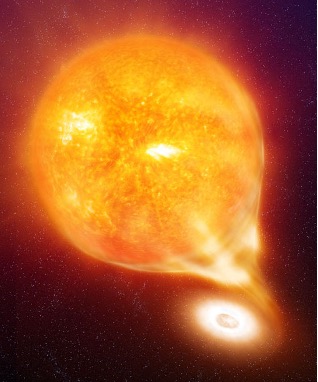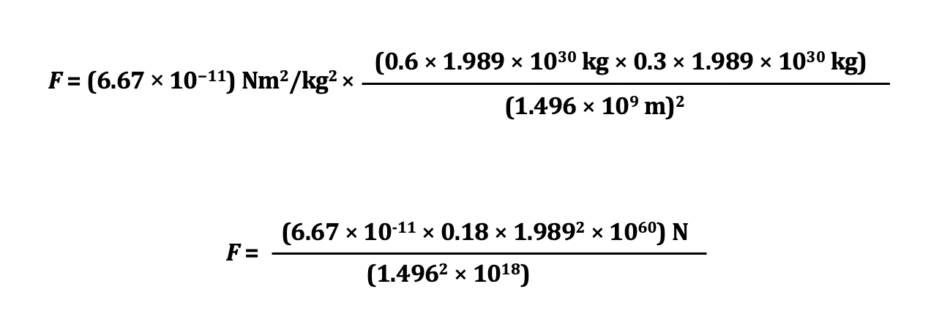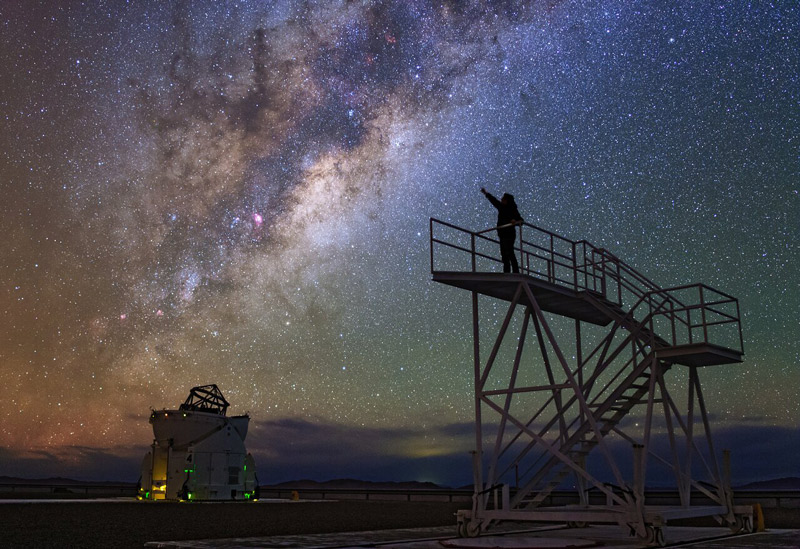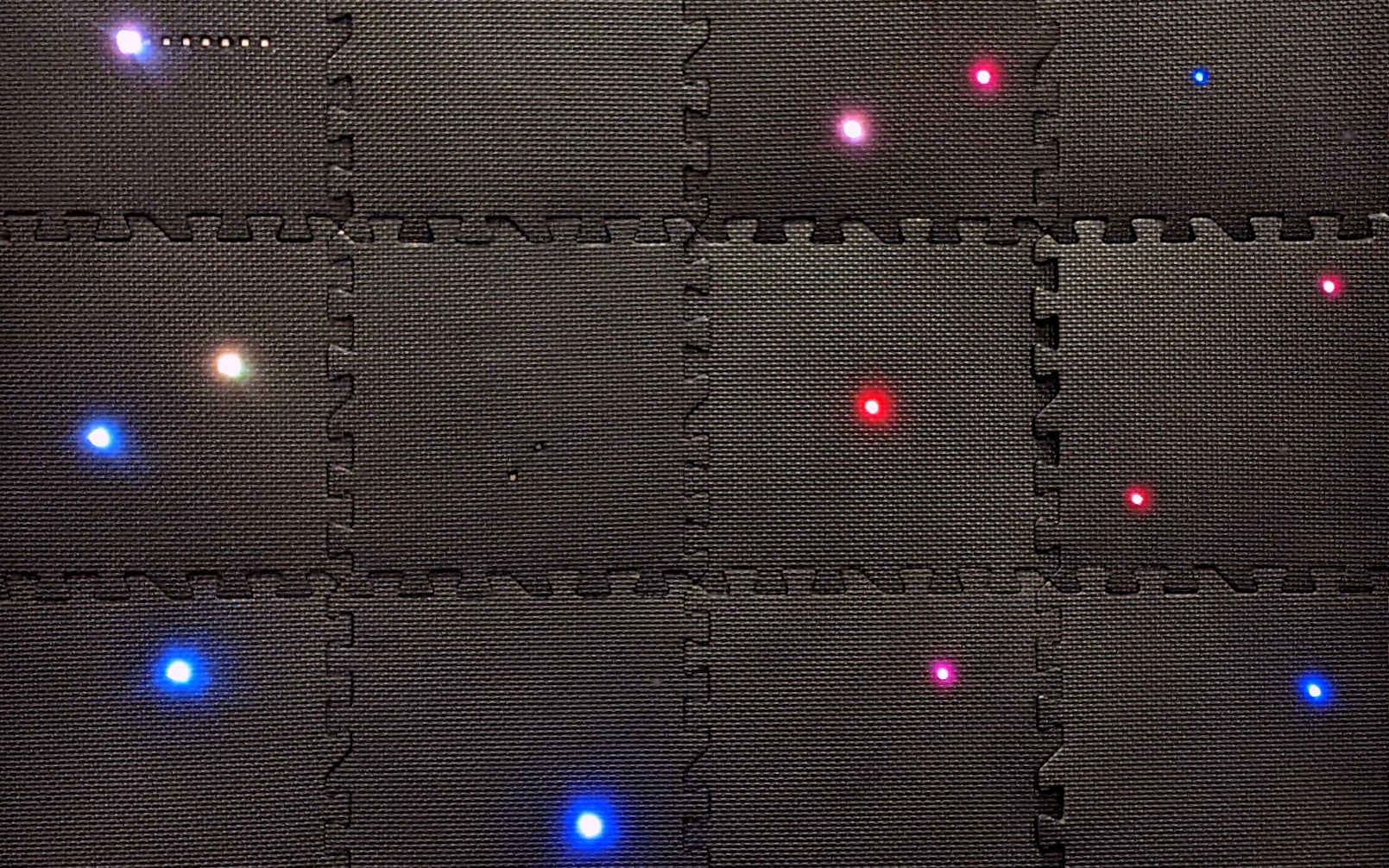
Fusion in the Universe: we are all stardust
Henri Boffin and Douglas Pierce-Price from ESO, in Garching, Germany, investigate our celestial…

Meet the universe’s ultimate drama queens – stars that steal, explode, and shine brighter than ever before.
If you were to look up at the night sky, you might see Betelgeuse, a red supergiant in the constellation Orion, or Aldebaran, a red giant in the constellation Taurus. You will notice that their brightness changes over time. This places them in the category of stars known as variable stars. Brightness variations in these variable stars can have several causes, such as pulsations or eclipses in binary systems (i.e., two stars orbiting around a common centre of mass due to their gravitational attraction to each other).[1]
There is a subset of variable stars that undergo irregular and dramatic sudden increases in brightness. They are always found in binary systems, and astronomers identify them as cataclysmic variable stars, and they are celestial cannibals.[2]

Technically, only the heavier of the two stars in this binary system is a ‘cannibal’ in the sense that it strips the outer layer of hydrogen-rich material off its smaller neighbour, triggering the exceptionally bright outburst. The ‘cannibalistic star’ is also referred to as a white dwarf, which forms when a Sun-like star reaches the end of its main sequence (the end of a star’s life cycle); it undergoes changes at its core and sheds its outer layers. What’s left is a dense, compact remnant about the size of Earth, but with a mass equivalent to 50–70% of the Sun or around 0.6 solar masses (one solar mass is the size of our Sun). In contrast, the companion is a familiar, Sun-like star on the main sequence, typically around 0.3 solar masses.[3]
As already mentioned above, every cataclysmic variable star system has two main characters: a normal, Sun-like star and a white dwarf. The white dwarf is the dense, leftover core of a star that has run out of fuel. It’s incredibly compact, and its gravity is mind-bogglingly powerful. In these binary systems, the two stars orbit each other at a dangerous distance. The normal star is being stretched by the white dwarf’s immense gravitational pull. This creates an invisible gravitational boundary around each star called the Roche lobe.
As the normal star swells and ages, its outer layers push past its Roche lobe and fall under the powerful influence of the white dwarf. This is where the cannibalism begins. The white dwarf’s gravity rips streams of hydrogen gas from its companion star. This stolen material doesn’t just fall straight onto the white dwarf. Instead, it spirals around it, forming a super-hot, spinning accretion disk. As more and more gas piles up on the white dwarf’s surface, its extreme gravity compresses and heats the gas layer to millions of degrees. The pressure and temperature become so high that they ignite a nuclear reaction on the surface. This violent explosion, called a nova, blasts the accumulated gas back into space. The system becomes dramatically brighter for a brief time before settling back down. The white dwarf survives the blast, ready to start the cycle of accretion all over again.
Newton’s universal law of gravitation can provide a simplified explanation of the mass transfer process in a cataclysmic variable star system.[4] The gravitational force between two masses plays a role in determining how material is transferred from the regular star to the white dwarf.
Let’s consider a cataclysmic variable star system with the following approximate values:

Substitute in the values:

Now calculate the result:

The gravitational force calculated represents the attraction between the regular star and the white dwarf. As the regular star loses its outer layers, this material experiences a gravitational pull towards the more massive white dwarf. Moreover, the force of gravity from the white dwarf should exceed the gravity of the regular star so that it is unable to keep its outer layer. Over time, the white dwarf becomes more massive, and the regular star becomes less massive. The gravitational force serves as the driving mechanism for the flow of material from the regular star to the white dwarf.
Understanding cataclysmic variable stars contributes to a deeper understanding of stellar mechanics. It allows us to piece together the puzzle of how stars evolve and interact. These systems give valuable insights into extreme stellar conditions, such as high temperatures and intense magnetic fields. This information helps to understand the later stages of stellar evolution after stars have left the main sequence. This knowledge is crucial for comprehending the various evolutionary paths that stars can take and the diverse outcomes resulting from different physical processes.

By investigating the dynamics of these systems, astronomers and astrophysicists can understand the gravitational interactions, orbital mechanics, and mass transfer processes that occur in binary systems. The study of these systems can also help us understand the physics of accretion disks. Although the disks in cataclysmic stars systems are for mass transfer, the same fundamental principles of material spiralling inward apply to the protoplanetary disks, which form planets around young stars like our Sun.
The best part? You can search for these events yourself! You don’t need a massive telescope. With a pair of binoculars and a good star chart, you can monitor certain areas of the sky known for having cataclysmic variable stars. When a nova occurs, the system brightens so much that it can become visible to the naked eye or through simple optics. Often, amateur astronomers around the world are the first to spot a new nova and report their findings to observatories. It’s a great way to contribute to real-world science and to experience the dramatic side of the universe firsthand.
The exploration of cataclysmic variable stars can be an exciting approach to learning something new when studying astronomy or astrophysics. Applying Newton’s law of gravitation helps students understand the forces at play when material from a regular star is pulled towards a massive white dwarf. It also gives novice learner insights into questions astronomers are investigating about the cosmos, while encouraging classroom discussion and fostering a lasting interest in the universe’s more exotic phenomena.
[1] Bath GT (1984) Cataclysmic variable stars. Astrophys Space Sci 99: 127–137. doi: 10.1007/BF00650236
[2] Warner B (1998) Cataclysmic Variable Stars. Highlights of Astronomy 11: 16–27. doi: 10.1017/S1539299600019924
[3] Littlefair SP et al. (2008) On the Evolutionary Status of Short-Period Cataclysmic Variables. Monthly Notices of the Royal Astronomical Society 388: 1582–1594. doi: 10.1111/j.1365-2966.2008.13539.x
[4] Halley E, Newton I (1687) Principia. Royal Society (Retrieved from the Library of Congress)
The particular phenomenon referred to may be used by teachers of science, physics and astronomy to illustrate and enrich their teaching in the hope of motivating student to seek out reasons why such a phenomenon is taking place. It’s a good way of applying Newton’ law of universal gravitation in a real situation. One can extend the argument as to why the same effect is not happening to the planets around the sun.
Paul Xuereb, University Junior College, Malta

Henri Boffin and Douglas Pierce-Price from ESO, in Garching, Germany, investigate our celestial…

We can’t image our home galaxy from the outside, so how do we study it? Learn how astronomers unveil the dramatic past of the Milky Way and peer into its future.

Written in the stars: use microcontrollers and LEDs to model stellar life cycles, scaling billions of years into minutes while exploring stellar evolution.